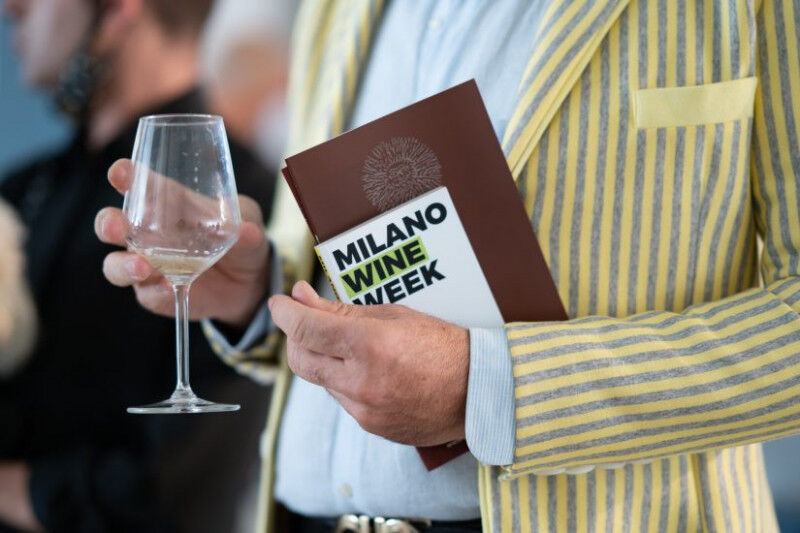Lugana Wine Tasting Review
Wine tasting is a guaranteed adventure into a specific territory and culture. This is an arena where you can literally taste an area’s history, and the passion of those who cultivate its enological wealth and believe in its potential to be great. When tasting local wines, it’s the only way to discover the reflections and characteristics each area vintage lends its wines.
When we know the geographical background behind regional grapes, we can slowly grasp each and every nuance that kaleidoscopically characterizes our favorite producers.
By studying the history and patterns from each appellation, we can glimpse the current and future potential each vineyard contains. The local producers and carers of these vineyards are capably blending together history with a far-sighted approach to innovation.
This Masterclass will help you directly experience the inspiring Lugana territory. Thanks to the inclusion of six wines from six select Lugana-area wineries, you’ll be transported to the shores of Lake Garda, Italy’s largest lake. Sit back, and enjoy your trip…
Lugana from a closer look
Lugana’s ancient lands have undergone an incredible development of repositioning over the past years. The believers in Lugana’s potential have thrown themselves into the task of helping Lugana evolve from an area known primarily for its tourism, holding some of Italy’s most beautiful sites to visit. The wines however, were not necessarily an authentic expression of the territory’s potential, often falling victim to being “touristy” wines. These wines were “smart” wines brimming with residual sugars in order to broadly meet international tastes.
Today’s Lugana wines however, have returned to their roots, and thanks to the efforts of devoted local producers, these wines are often expressive of true identity, and unique characteristics that interpret their homelands’ aromatic facets.
One of the greatest influences on the area is Lake Garda. The area’s vineyards are subject to the regional climate, terrain, winds, position and altitudes. All mixed together, these elements ultimately help create the kaleidoscope of reflections in one’s wine glass.
When you open a bottle of Lugana-area wine, relative to the side of Lake Garda from where the bottle comes from, you’ll discover new, vibrant elements of both your wine and Lake Garda that will endear you to both the place and the wines of this Northern Italian land.
Lake Garda’s lands:
The lands of Lugana are geographically sandwiched by Lake Garda, which extends throughout two individual regions, Veneto and Lombardy.
This magical square-shaped district has its vertical extension that runs through the towns of Sirmione and Pozzolengo, and extends horizontally through the towns of Desenzano and Peschiera del Garda.
The Lugana wine appellation springs forth from the morainic plain south of Lake Garda, and stretches across the Brescia and Verona provinces. One of the area’s defining characteristics that is present in just about every aspect we see, is a sense of dualism and individuality that co-exist.
One principle expression of this dualism can be found in the Man and Nature relationship. In this region, Man has found and envisions tremendous potential in Nature, and carries out every effort at exalting and enshrining Nature’s details and beauty.
The Lugana Soil
The Lugana region features a range of different landscapes, including flat coastal lands, and hilly and mountainous areas. Each area features radically unique soil types that ultimately characterize the aromatic profile and structure of each wine.
- Flat area: soil is calcareous and clayey. This area is perceived as the traditional Lugana area, and produces the most structured, long-lived wines in the appellation.
- Hilly area: soil is composed of morainic debris, with less compact and clayey structure. The wines created here are typically more immediate, aromatic Lugana selections.
- From a geomorphological perspective, the dividing line for the two distinct soil types can be found at the Tower of S.Martino.

Lugana’s Mesoclimatic standing:
Lugana’s microclimate is predominantly mild, creating the ideal circumstance to care for and enhance the area’s particular grape varietals’ ripening process, like the Turbiana.
The mild, constant temperatures of the area are influenced by the presence of Lake Garda, and thanks to this water source, the area also enjoys a low incidence of temperature changes from day to night.
The municipalities of Desenzano and Lonato, and other areas adjacent to Lake Garda, enjoy very favorable climates, with long, hot summers that are always breeze-controlled. The winters in this part of Lugana are short and mild, with light rains and gentle winds. The lake’s waters also serve to return the heat stored in its waters to the soils, creating the ideal conditions for maintaining healthy, viable vineyards.
Lugana DOC’s Historical Background
The Lugana DOC wine appellation is produced in the southern Lake Garda lands. Viticulture has been present here since the Bronze Age, although the lands were primarily covered with marshy forests leading up to the time of the Republic of Venice.
With the presence of the Venetians in the territory, the land was cleared so that the local production of wheat and cereals could be increased. This modification led to a permanent change to the native lands. From that fortuitous clearing, vineyards were introduced, and became a predominant local crop. Over the course of time, the vineyards eventually became the predominant feature of the fertile landscapes.
Lake Garda: a place lost in time
Primitive cultures developed some of Italy’s first Pile dwellings (stilted houses) right in the heart of the Lugana lands. The latest finding and dating of these structures have been deemed so important that the dwellings have become UNESCO World Heritage cultural sites to protect.
Ancient Romans passing through Lugana constructed a Mansio in Lugana, or a post station, located on the Gallic road connecting Brescia to Verona. In this location, records indicate the Romans rested, before changing horses for their travels as they surely enjoyed the lovely landscapes surrounding Lake Garda.
They enjoyed the local area so much that many villas were erected on the shores of Lake Garda, the most beautiful of which are today known as the Grottoes of Catullus. Although the name does reference a different geological remnant, the name is in reference to a sprawling archeological site of an ancient Roman villa that shows how significant the Roman presence was in the Lake Garda lands.
The Vine of the Territory: Turbiana
Turbiana grows into a medium-sized, compact bunch. These bunches have a graceful elongated pyramidal shape, with individual grapes featuring thick skin, juicy pulp, and the proper levels of acidity.
Turbiana finds fine expressions in both a still and sparkling version. While the vine’s historical references are to an ancient, noble varietal, the grape has also been shown to produce a forward-thinking white wine rich in nuances and personality.
Production Disciplinary: Lugana
The "Lugana" denomination of origin (DOC) is applied exclusively to white wines that follow the specifications of the type: Lugana - Lugana superiore - Lugana Riserva - Lugana Tardiva - Lugana Spumante.
The wine’s original vine source must be Turbiana, also known historically as the Trebbiano di Lugana grape. Other white-berried grape varietals can be used in conjunction with Turbiana grapes to produce the Lugana wines. Other varietals must be non-aromatic, and suitable for cultivation in the Lombardy region and in the province of Verona. The external grape varietals may account for up to 10% maximum of the total percentage of vines used in Lugana DOC wines.
Lugana: some numbers
- 1% of Lugana DOC wines are Riserva (regulations stipulate the wine must be cellar-aged for 24 months, and another 6 months bottle-ageing prior to release)
- 0.2% of Lugana DOC wines are Superiore (regulations require cellar-ageing for at least 1 year before release)
- 0.8% of Lugana DOC wines are Sparkling selections crafted in both the Classic and Martinotti methods
- Lugana DOC Consortium counts 200 wineries and winemakers as members, with 80 wineries and 90 winemakers registered
Lugana DOC - the Tastings
Below, we’ll taste a select 6 vintage wines that have been selected from a swathe of the Lugana region. We opted for this method in order to highlight how each territorial variation lends the wines their own completely unique, individual identities.

Wine #1 - Famiglia Zenato "San Benedetto"
- 2020 vintage
- retails for €10
Olfactory Notes
Slightly floral notes, and a citrine accent help a freshness emerge. Wisteria flowers blend with fruity notes reminiscent of nectarine. The typical character of Turbiana grapes, the presence of almond flowers, are present as well. Throughout the tasting, levels of flowers from fruit trees are present with a contained, barely-here aromaticity.
First impressions of characteristic minerality make their presence known in the wine glass.
Tasting
Flavors of fresh fruit are confirmed along with a lovely acidity that generates a crisp sensation. The fruit is precise, and almost geometrical in approach.
Winery notes
The Zenato winery is composed of 32 hectares, with a growing density of approximately 3500 plants per hectare. The land is located in the area of Peschiera, near Lake Garda, and features soils with a heavy clay composition.
Today’s generation of Zenato wine-makers create their vintages as a direct inheritance from the founding Zenato father, first established in the area in the 1960s. Over the years, a fabulous study of the Turbiana ampelography ultimately led to the creations of an onsite nursery, where clones are tended to, and selected over time.
Zenato uses cellar-ageing on fine lees, a Surli method, and the presence of mannoproteins that ensures the wine has persistence and length in their tastes.
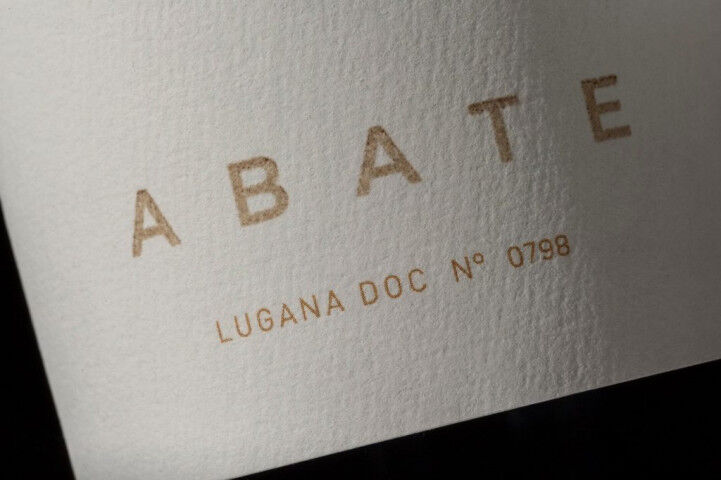
Wine #2 - Az. Abate Lugana
- 2020 vintage
- retails for €10
Olfactory notes
As we approach the glass, a buttery, creamy note is immediately noticeable. This creaminess is the result of a pushed refinement on fine lees, and results in these creamy, layered notes.
This wine selection takes us from the clays of the flatter lands to the rockier, sandy soils found in the hilly lands. We’re now in Desenzano, at 134 meters above sea level and moving away from Lake Garda beyond the area of Torre di San Martino.
One fascinating geological and enological element is how the wine’s characteristics are altered as one moves away from the lake. One can taste and experience how the Turbiana grape reacts when its roots take hold in the area’s sandy, rocky soils.
Tasting notes
This selection features a greater volume than Turbiana grapes that grow in clay-rich soils. Here, we find a creaminess that’s expressed through a full, consistent body. Batonage takes place for 3 months with this vintage, and is carried out on lees exclusively inside stainless steel barrels, without the use of wood in any of the ageing steps.
A specific creaminess results from the Turbiana grape’s refinement process on fine lees. The resulting wine is a food-friendly wine, an element we find in just about every Lugana wine. This selection’s immediate pleasantness makes instant friends with food, and is enjoyable drinkable. When paired with great company and food, this is a wine that allows you to drink without ever feeling heavy - a wonderfully deep structural selection.
Company notes: Abate
The Abate winery is formed from approximately 7 hectares, or just over 17 acres. In the Desenzano area heading towards Lonato, where the estate’s lands are, the climate is particularly favorable. Long, hot summers are interspersed with short, mild winters and delicate breezes that caress the vineyards.
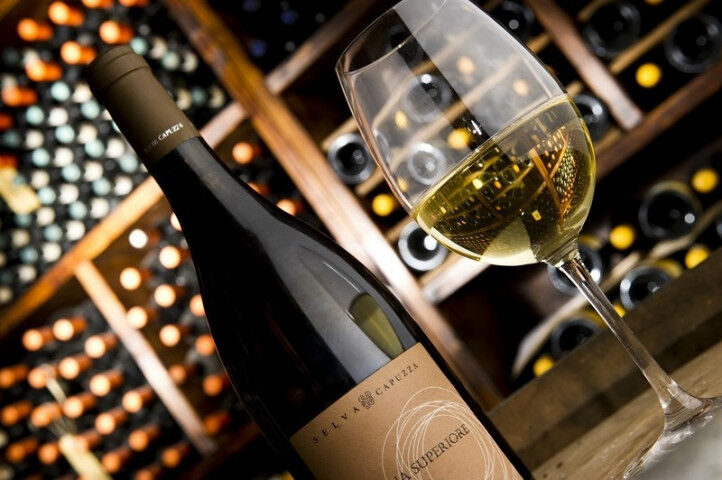
Wine #3 - Podere Selva Capuzza by Luca Formentini “Lugana Selva 2019 "
- 2019 vintage
- retails for €12
Olfactory notes
This selection hints of Turbiana are completely different from our first two selections, and feature a more meditative version of Lugana. Lemon peel notes alternate with rosemary flower scents. Specific Balsamic elements help distinguish the wine, and carry it towards the tertiary sensation with its aromatic impact.
When the wine is in the glass, we can note a certain “muddy elegance.” What does this mean? Close your eyes, and the wine will bring you right to Lake Garda’s waters, where you can whiff the scent of wet clay during a lakeside stroll.
Tasting notes
While first impressions might lead one to think of this wine as having an easy interpretation, and a facile drinkability. Appearances can be deceiving however, and this interpretation would amount to a fake simplicity if taken at face value.
As a classic example of a Fine Wine, the Selva vintage expresses a specific ageing potential thanks to a linearity of taste. Once you handle a second tasting of the Selva vintage, new sensations and visions appear, heightening pleasurable sensations not immediately gained.
Notes of authentic peat emerge, heading in a mineral direction, and one that at first glance has been defined as “elegant muddiness.”
Company notes
The Selva company is formidably characterized by Luca Formentini's sensitive, empathetic approach to the local environment. Here, we find an important sensitivity towards sustainability, and a careful attention to the control of carbon footprints that can impact the area’s ecosystem.
Today, Selva is a true oasis of biodiversity and sustainability thanks to the company’s dedication to transforming their resources and energy into a measurable, technical approach to wine-making. For further reference, be sure to check out the ItaCa Tonni Project, or the Italian Wine Carbon Calculator project.
The Podere Selva Capuzza estate is located in the municipality of Desenzano del Garda, south of Lake Garda, and is composed of circa 30 hectares of vineyards.

Wine #4 - Marangona - Tre Campane
- 2018 vintage
- retails for €12,50
Olfactory notes
A brilliant color impresses the eyes, while this stunning selection dazzles the nose with a freshness and cleanliness that’s eternally refreshing. An elegant hydocarbonic note results from fruit and elemental tertiarization. A typical note of peach-like syrup that’s a hallmark of the Turbiana grape mingles with nuances of green tea.
Delicate, whisper-like floral notes are just enough to whisk you away to Lake Garda’s elegant gardens, instantly transporting you to a place of great beauty and perfumed wines.
The incorporation of the Stelvin, or a screw-cap closure, help preserve the tension found in the bottles of this vintage.
Tasting Notes
In the Marangona selection, the crunchiness of the Turbiana peel pairs marvelously with notes of almond flowers. Fruit notes lend a natural sweetness, and the complete absence of residual sugars can only mean an absolute perfect ripening and flawless fruit management during the vintage’s vinification.
An incredibly fine, elegant tannin gives the vintage strength and structure. The lingering notes on the palate indicate a taste of a vintage that never ends.
Company notes
The Marangona wine estate is located in Pozzolengo, between the cities of Peschiera and Sirmione. Calcareous clay-heavy soils characterize the estate’s 34 hectares planted with organically-certified vines dating back 40 years of age. Stainless steel barrels only are used for this specific vintage, although the winery does make use of cement barrels for other estate-aged wines.
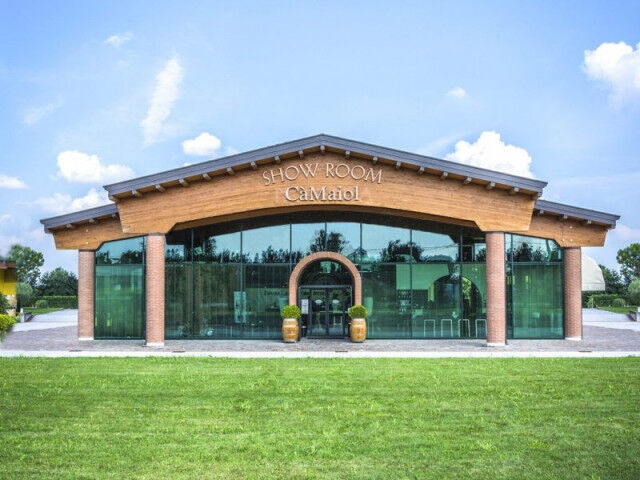
Wine #5 - Cà Maiol "Lugana Molin"
- 2013 vintage
- retails for €13
Olfactory notes
A very pure cedar distillate, mixed with an intense aroma or candied ginger rind are perfectly integrated with distinct mineral notes.
The wine slowly reveals a smoky aroma, with notes of medlar and apricot blending with the aroma of a gunflint, or a matchstick.
As the Cà Maiol selection evolves in its glass, the presence of oxygen opens up an aromatic box of this 2013 vintage. Here we can find Balsamic notes like beeswax, mountain wildflowers, gentian, and liquorice, all evolving into a splendidly complex bouquet.
Tasting notes
The Cà Maiol selection features a creamy yet taut mouthfeel, laden with saffron accents. While Lugana wines are reputedly not intended for ageing, it’s an interesting concept to investigate further, as their evolutionary potential appears quite promising instead.
Our selection’s residual sugar is about 6 grams per liter, which amplifies the creaminess aspect. The sugars also lend a slightly phenolic accent of almond and marzipan.
Company notes
Cà Maiol was founded in 1967, by Milan-born Walter Contato. This entrepreneur fell in love with the Garda and Lugana regions and founded Cà Maiol, which was in turn acquired by the Santa Margherita Group in 2017.
The figurehead of this wine estate is located in a wonderful historic building in the heart of the estate’s Turbiana vineyards. But the real magic happens within the estate’s modern wine-making approach and technologies. Here, a precise, respectful vinification takes place in the adjacent vineyards.
The technologies and wine-making approach embraced by Cà Maiol is not an investment for itself alone, but also helps improve the yearly quality of Lugana DOC wines across the board.
This commitment to excellence in fact is indicative of the renewed interest in one of Italy’s finest varietals, in one of the country’s most ancient and perfectly-suited wine-making territories.
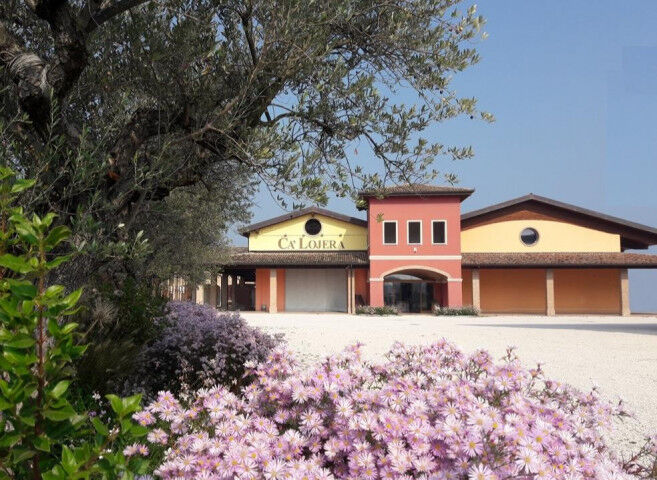
Wine #6 - Ca' Lojera "Lugana Riserva del Lupo"
- 2005 vintage
- retails for €12,50
(This 2005 Cà Lojera wine is a Reserve, although Riserva wines were only introduced to the Lugana disciplinary group in 2010)
Olfactory notes
An extremely delicate note of laurel leaves brings up visual memories of a countryside stroll, walking alongside a laurel hedge.
The presence of slightly oxidized autumn leaves and mushrooms can be found in this selection. But as the wine evolves in the presence of oxygen, an exotic mango note emerges that ushers in a gunpowder element typically found in Turbiana grapes.
We finish with aromas of popcorn topped with burnt caramel.
Tasting notes
The Cà Lojera vintage features an excellent creamy texture that’s able to fully express the evolutionary capacity of these Lugana wines. The vignerons, Ambra and Franco Tiraboschi first began their wine-making journey in 1992, and have since dedicated their complete passionate natures to creating memorable interpretations of Lugana wines.
By seeking out eternal youth in wines, they came across an elegant ageing capacity applicable to their wines but also life in general.
Company notes
Cà Lojera is located near Sirmione, and just a few steps away from Lake Garda. Here, 18 hectares of Turbiana are cultivated in white clays that were once the Lake’s bottom surface. The estate also has another 2 hillside hectares that are characterized by morainic debris. The estate vineyards here are dedicated to Chardonnay, Merlot and Cabernet varietals.
The wine-makers have taken an interesting enological road, introducing the notion of 3 separate harvests taking place throughout the fall season. The first harvest occurs in September, followed by another harvest the first week of October, and bookmarked by the third harvest in November.
Why the prolonged harvests? The winemakers have indicated this structure allows them to amplify the fruits’ natural nuances, and preserve the freshness of the first harvest and the exotic notes that evolve during the second harvest in October.
The estate follows vinification in steel barrels and a complete absence of wood, allowing the original imprint of the territory to remain intact. Earth, sun, water, and man’s efforts complete the expressive capacity of the Turbiana grape.
Why choose a Lugana wine?
Thanks to the area’s mild climate, suitable rain levels, gentle breezes, and calcareous soil with clayey stratifications, the Lugana wines are able to strongly identify and express their land of origin. This lakeside land gives them not only a name, but also a scent of the superb natural ambiance found in the Lugana region, along with a sweetness, a softness, and a strength all originating from the power of this northern Italian wine-making land.
As you discover Lugana’s wines, you are inevitably setting off for a discovery of the region’s natural highlights. You also have the chance to unearth local history and beauty, and you’ll likely discover new reasons to fall in love repeatedly with this area.
Our journey brought us into contact with unique, innovative wines each with their own clear identities. While each maintains their own identity, they all are connected to each other as they tell a local story, the story of their land of origin.

all.sign in to leave a review
